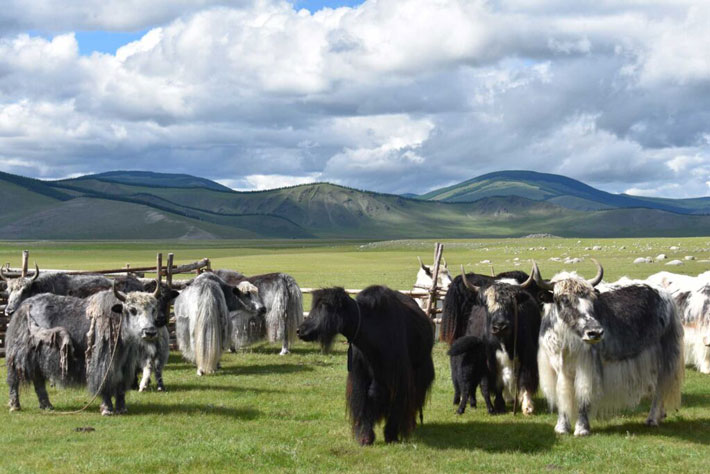 ANN ARBOR, MICHIGAN—According to a statement released by the University of Michigan, an international team of researchers has found direct evidence of yak milk consumption in the dental calculus of an elite woman of the Mongol Empire whose remains were recovered from a cemetery in northern Mongolia. The thirteenth- and fourteenth-century burials in the cemetery had been well preserved in the permafrost, but as it has melted, the burials have been exposed and left vulnerable to heavy looting. The consumption of milk from cattle, sheep, goats, and horses is known to have begun in Mongolia more than 5,000 years ago, yet little is known about the domestication of yak and the consumption of yak milk. “Our proteomic analyses concluded that she drank yak milk during her lifetime. This helped us verify the long-term use of this iconic animal in the region and its ties to elite rulers,” said Alicia Ventresca-Miller of the University of Michigan. The analysis also identified horse milk curd proteins, horse blood proteins, and blood proteins from goat-antelopes in the dental calculus of the people buried in the cemetery. Read the original scholarly article about this research in Communications Biology. For more on Mongolian archaeology, go to "Around the World: Mongolia."
ANN ARBOR, MICHIGAN—According to a statement released by the University of Michigan, an international team of researchers has found direct evidence of yak milk consumption in the dental calculus of an elite woman of the Mongol Empire whose remains were recovered from a cemetery in northern Mongolia. The thirteenth- and fourteenth-century burials in the cemetery had been well preserved in the permafrost, but as it has melted, the burials have been exposed and left vulnerable to heavy looting. The consumption of milk from cattle, sheep, goats, and horses is known to have begun in Mongolia more than 5,000 years ago, yet little is known about the domestication of yak and the consumption of yak milk. “Our proteomic analyses concluded that she drank yak milk during her lifetime. This helped us verify the long-term use of this iconic animal in the region and its ties to elite rulers,” said Alicia Ventresca-Miller of the University of Michigan. The analysis also identified horse milk curd proteins, horse blood proteins, and blood proteins from goat-antelopes in the dental calculus of the people buried in the cemetery. Read the original scholarly article about this research in Communications Biology. For more on Mongolian archaeology, go to "Around the World: Mongolia."
Consumption of Yak Milk in Mongol Empire Identified
